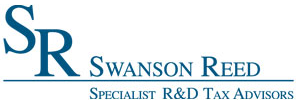Arkansas Patent of the Month – March 2023
Despite progress in the diagnosis and treatment of cardiovascular diseases, heart attack and stroke remain among the leading causes of death. A key risk factor for cardiovascular diseases is the presence of circulating clots which move through the bloodstream and may unexpectedly block blood vessels. If blocked, oxygen cannot move through and vital organs may become deprived.
This risk factor can be hard to detect. Invasive procedures may analyze blood samples, but this is often time consuming and expensive and may be inaccurate during early phases as the small sample size may be too insignificant. BioVentures, LLC, a biotechnology company formed as a formal outgrowth of the University of Arkansas for Medical Sciences‘ (UAMS), is working towards developing in vivo solutions which could analyze a higher volume of blood and improve early detection.
The company has recently patented a system for detecting clots in vivo – which means within the body. Rather than relying on an invasive procedure or the collection of small blood samples, the solution uses a negative photoacoustic contrast technique that exploits the significantly lower absorption of laser pulse energy by platelets compared to red blood cells at selected ranges of pulse wavelengths.
The science behind the technology came about when it was discovered that circulating clots produced photoacoustic signals that were significantly lower in magnitude than the background photoacoustic signals produced by the surrounding bloodstream. As a result, a sharp reduction in the magnitude of photoacoustic signals within a series of photoacoustic signals may be associated with the detection of a clot in this technique.
The device includes an in vivo flow cytometer, a clot monitoring system, and an alarm system. The in vivo flow cytometer includes a pulsed laser, an optical fiber, and a photoacoustic detector. The clot monitoring system includes a processor that analyzes the photoacoustic pattern emitted by the clot induced by at least one pulse of laser energy to calculate at least one characteristic of the photoacoustic pattern. The processor then compares at least one characteristic of the photoacoustic pattern to a set of calibration patterns to determine clot properties. The alarm system alerts medical personnel when the device detects a clot in the circulatory vessel of the living organism.
The new device and method are non-invasive, continuous, and have high detection sensitivity and spatial resolution, making them suitable for monitoring the development of clots over time and the early detection of circulating microclots. This information may help medical professionals make better-informed decisions regarding therapeutic clot elimination treatments, as well as monitor the effectiveness of such treatments.
Are you developing new technology for an existing application? Did you know your development work could be eligible for the R&D Tax Credit and you can receive up to 14% back on your expenses? Even if your development isn’t successful your work may still qualify for R&D credits (i.e. you don’t need to have a patent to qualify). To find out more, please contact a Swanson Reed R&D Specialist today or check out our free online eligibility test.
Who We Are:
Swanson Reed is one of the U.S.’ largest Specialist R&D tax advisory firms. We manage all facets of the R&D tax credit program, from claim preparation and audit compliance to claim disputes.
Swanson Reed regularly hosts free webinars and provides free IRS CE and CPE credits for CPAs. For more information please visit us at www.swansonreed.com/webinars or contact your usual Swanson Reed representative.
What is the R&D Tax Credit?
The Research & Experimentation Tax Credit (or R&D Tax Credit), is a general business tax credit under Internal Revenue Code section 41 for companies that incur research and development (R&D) costs in the United States. The credits are a tax incentive for performing qualified research in the United States, resulting in a credit to a tax return. For the first three years of R&D claims, 6% of the total qualified research expenses (QRE) form the gross credit. In the 4th year of claims and beyond, a base amount is calculated, and an adjusted expense line is multiplied times 14%. Click here to learn more.
R&D Tax Credit Preparation Services
Swanson Reed is one of the only companies in the United States to exclusively focus on R&D tax credit preparation. Swanson Reed provides state and federal R&D tax credit preparation and audit services to all 50 states.
If you have any questions or need further assistance, please call or email our CEO, Damian Smyth on (800) 986-4725.
Feel free to book a quick teleconference with one of our national R&D tax credit specialists at a time that is convenient for you.
R&D Tax Credit Audit Advisory Services
creditARMOR is a sophisticated R&D tax credit insurance and AI-driven risk management platform. It mitigates audit exposure by covering defense expenses, including CPA, tax attorney, and specialist consultant fees—delivering robust, compliant support for R&D credit claims. Click here for more information about R&D tax credit management and implementation.
Our Fees
Swanson Reed offers R&D tax credit preparation and audit services at our hourly rates of between $195 – $395 per hour. We are also able offer fixed fees and success fees in special circumstances. Learn more at https://www.swansonreed.com/about-us/research-tax-credit-consulting/our-fees/
Choose your state

















